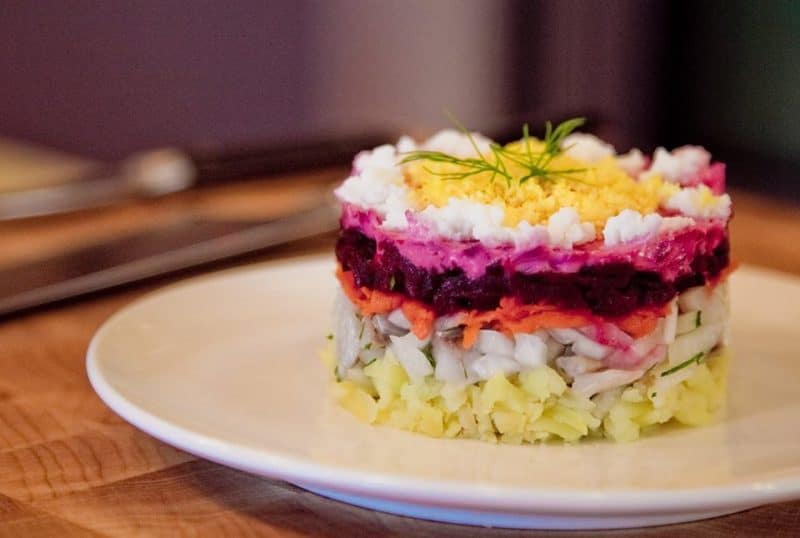Potatoes, herring, beets, and mayonnaise come together to create the beloved Herring under a Fur Coat (селёдка под шубой), served at nearly every special occasion in the post-Soviet space. It was first seen in the early days of the Soviet Union. However, what is most unusual about the salad is its bright purple color, which comes from the top layer of beets and mayonnaise.
How the Salad Got Its Name
(Почему салат носит такое название?)
According to legend, Herring under a Fur Coat was first introduced in Moscow in 1918 and was originally known simply as ШУБА.
The story goes like this: Anastas Bogomilov, a merchant who owned cafes in Moscow and Tver, noticed that his customers would drink heavily and begin to debate the fate of the country in the early post-revolution months. These discussions often ended in fights, where Mr. Bogomilov’s glasses and dishes were broken. A chef at one of his cafes offered to create a hearty snack, which would sober up the customers and thus reduce the number of fights. The result was “ШУБА.”
The ingredients used were meant to symbolize unity within the new Soviet society — the pickled herring, symbolizing the proletariat, potatoes, symbolizing the farmers, and the blood-red beets, symbolizing Communism over the top. The name “ШУБА” was an acronym for “Шовинизиму и Упадку — Бойкот и Анафема” (To Chauvinism and Decadence, a Boycott and a Ban). According to some versions of the legend, the salad was even introduced on December 31, 1918 to keep the New Year’s revelers in check – thus adding to the salad’s credentials as a holiday staple.
Since its creation, the political meaning of the name has dropped. Now people call it “Herring under a Fur Coat”, which literally means “herring under a fur coat.” As the top layer is made of shredded beets, the dish does indeed have a passably “furry” appearance.
Additional ingredients have since been added to the dish – onions, carrots, pickles, even eggs and apples, for instance. However, in all cases, the salad remains a very inexpensive and hearty comfort food – a true salad of the people.
When and How to Eat Herring under a Fur Coat
(Как правильно есть салат «Селёдка под шубой»?)
Throughout the Post-Soviet World, “Новый Год” (New Year’s) is undoubtedly the most celebrated and beloved holiday. Families put up a New Year’s Tree, called а “ёлка” (Yolka), people give each other gifts, children sing and recite poems, and, of course, there is a big feast with family and friends. Herring under a Fur Coat, together with another mayonnaise-based salad, салат «Оливье» (Olivier Salad), can be found on almost every holiday table throughout the Russian-speaking world on this important holiday.
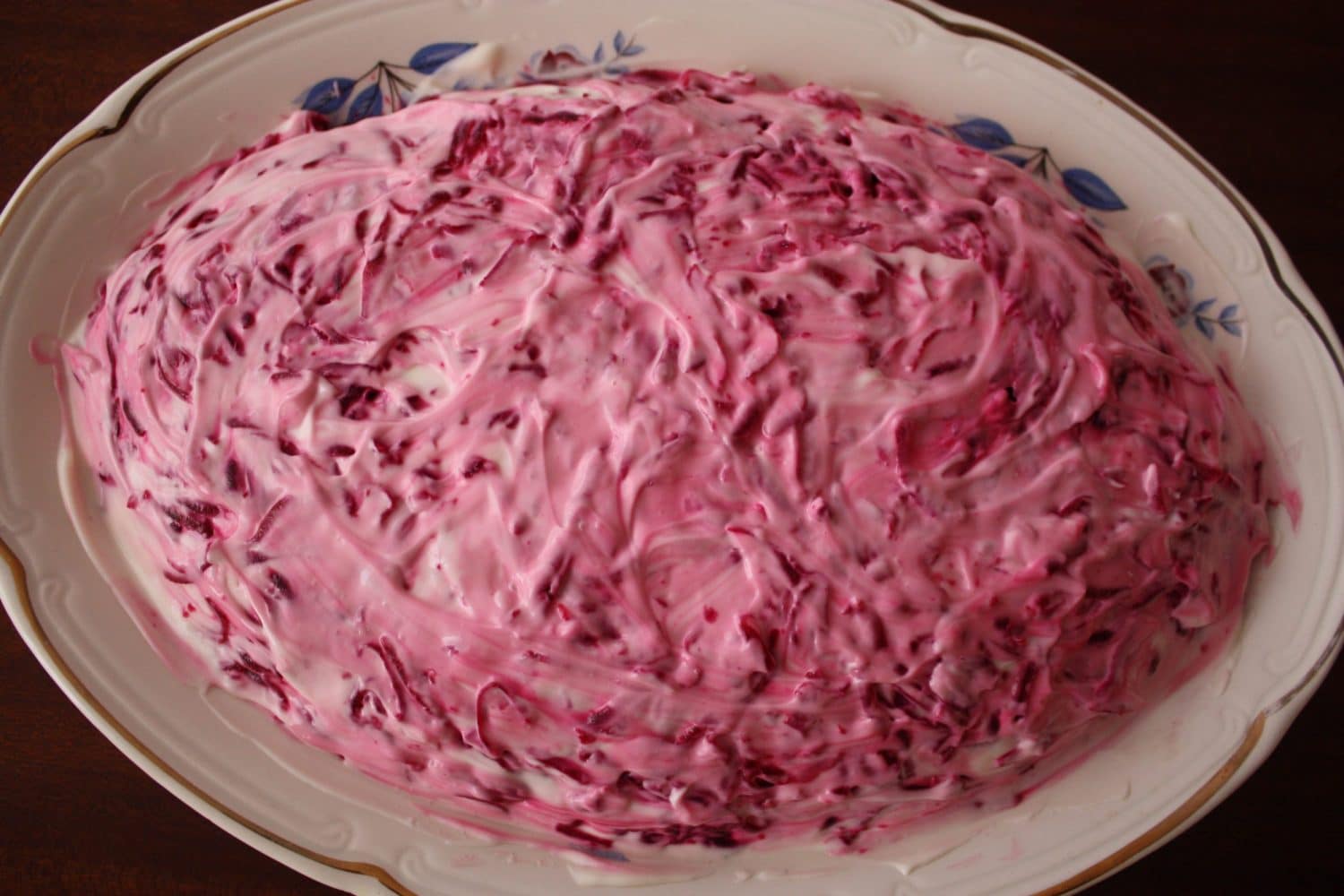
Under the Soviet Union, this salad was almost exclusively associated with New Years, but now it is also served at other holidays, birthday parties, and can even be purchased at most deli counters in Russian supermarkets on any given day.
How to Prepare Herring under a Fur Coat
(Как правильно готовить салат «Селедка под шубой»?)
When preparing Herring under a Fur Coat, be sure you allow time for it to sit in the refrigerator for at least one hour before serving. This allows the mayonnaise to soak through everything, giving the salad a jelly-like consistency and allowing the flavors to mix.
The final salad should look like a layered cake. When you add layers of mayonnaise, do it as if you were icing a cake.
The vegetables are always boiled with the skins on. This helps preserve the color, flavor, texture, and nutritional value of the vegetables. They should be cooked until the skins are soft and peel off easily. All the boiled vegetables are peeled before being added to the salad – including the carrots. You should be able to take off the skins quite easily with a paring knife or even with your bare hands.
The salad is often garnished with such ingredients as egg yolks, carrots, herbs, or even shredded apples. These additions are optional and can be added to taste.
Vegetarians can replace the herring with avocado and vegans can use mayonnaise made from oil rather than eggs, although neither substitution is considered “traditional.”
Herring under a Fur Coat Recipe
(Давай Приготовим!)
| Селедка под шубой | Herring under a Fur Coat |
Ингредиенты
Шаги
|
Ingredients
Steps
|
Our Favorite Herring Videos
This video is a simple presentation on how to prepare Herring under a Fur Coat. During the video, the host orally explains the directions and then has pictures or video after his explanation to review what he has just said. The format of this video makes it a good tool for testing Russian comprehension skills.
In this video, a Russian babushka calmly explains how to make the classic Russian salad Herring under a Fur Coat. This video is great for working on listening skills, because the host speaks clearly and slowly. Plus, the video has Russian subtitles to help viewers follow along.
While the ingredients that go into Herring under a Fur Coat are relatively standard, many cooks get quite creative with the salad’s presentation. The below video shows several particularly festive versions of this celebratory salad.
You Might Also Like
Kupala is an ancient Slavic holiday celebrating the summer solstice, or midsummer. Once part of a series of annual rituals, it marked and was believed to sustain agricultural cycles—essential to early human survival. Held as vitally important, these pagan traditions remained deeply rooted even after Christianization, technological change, and centuries of oppression tried to dislodge […] Easter breads such as kulich, paska, choreg, and nazuki are delicious Easter traditions. Easter is by far the most important religious holiday for those practicing Eastern Christianity. In addition to church services and egg dying, the holiday is also marked across the cultures by ritual bread baking. Despite the wide geographic area covered by Eastern […] Below, Tajik blogger Roxana Burkhanova describes, in Russian, the place of St. Petersburg in Russian culture. She discusses the city’s history as well as its literary heritage, its nightlife, and even how people from Petersburg speak their own, slightly different dialect of Russian. The text was originally written in 2015 and thus references times before […] Rites of welcoming spring and saying goodbye to winter are some of the oldest holidays preserved across Slavic cultures. In the Baltics, the celebrations were nearly lost after being suppressed by Catholic and imperial dominance. Today, Russia’s Maslenitsa is by the far the best-known, but multiple versions exist across the diverse Slavic landscape. In the […] This extensive list of web resources to assist students learning the Russian language was developed by SRAS and is now hosted on Folkways, part of the SRAS Family of Sites! Disclosure: Some of the links below are affiliate links. This means that, at zero cost to you, we will earn an affiliate commission if you […]
Kupala: Ancient Slavic Midsummer Mythology and its Modern Celebration

Kulich, Paska, Nazuki: The Easter Breads of Eastern Christianity
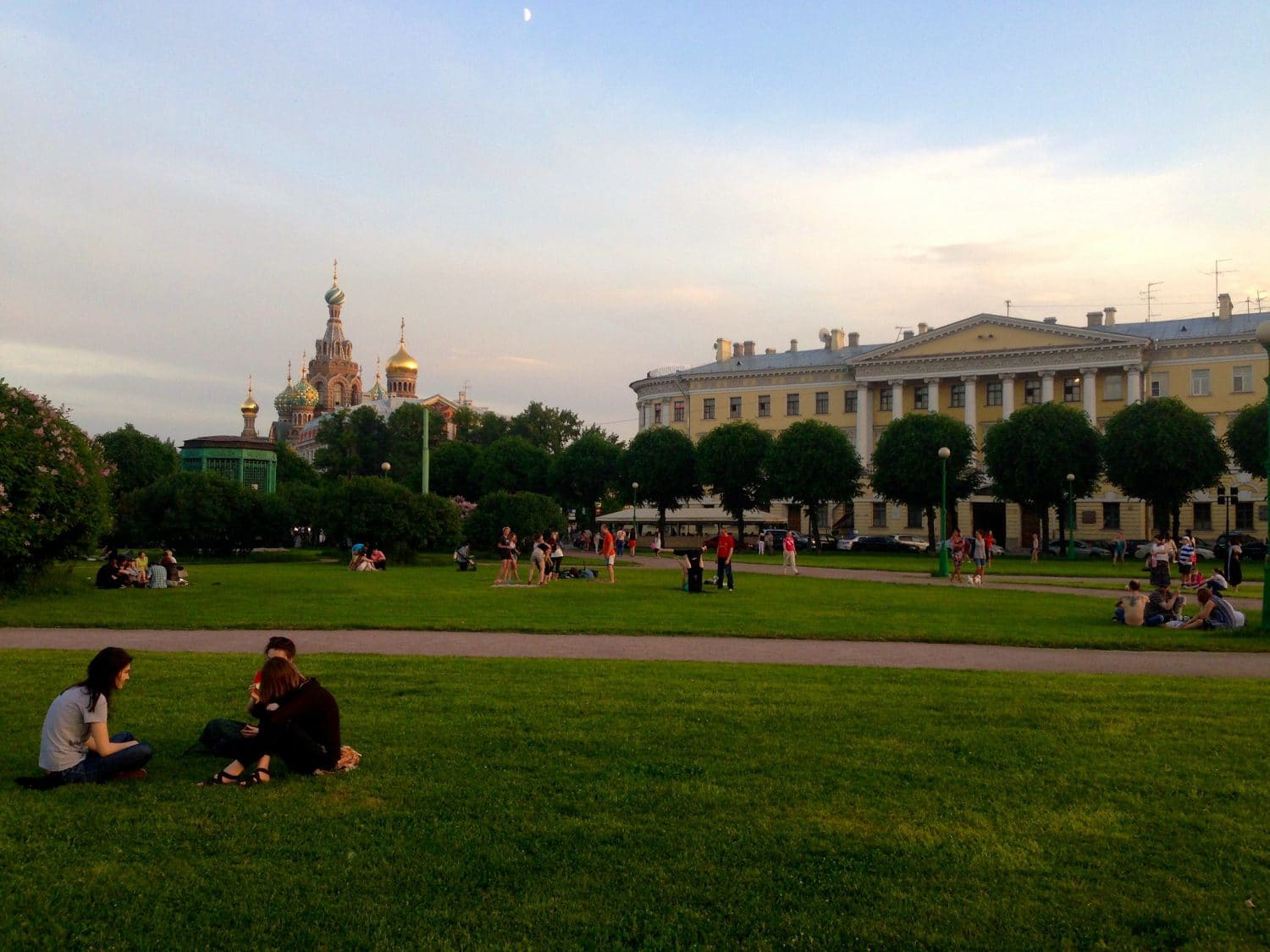
Off to Petersburg, Russia’s Cultural Capital: Моя Россия Blog
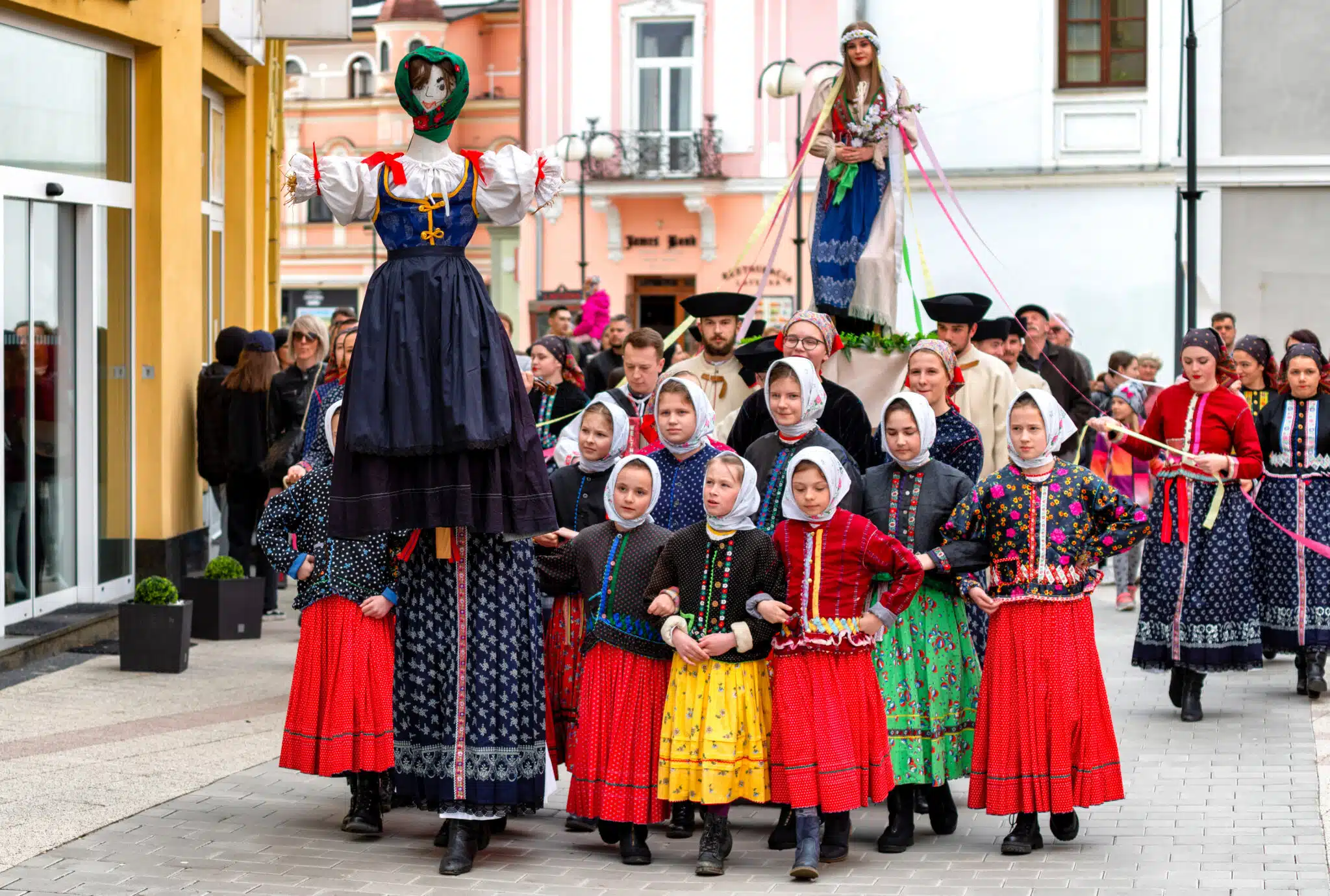
Maslenitsa, Masliana, Meteņi: Spring Holidays of the Slavs and Balts
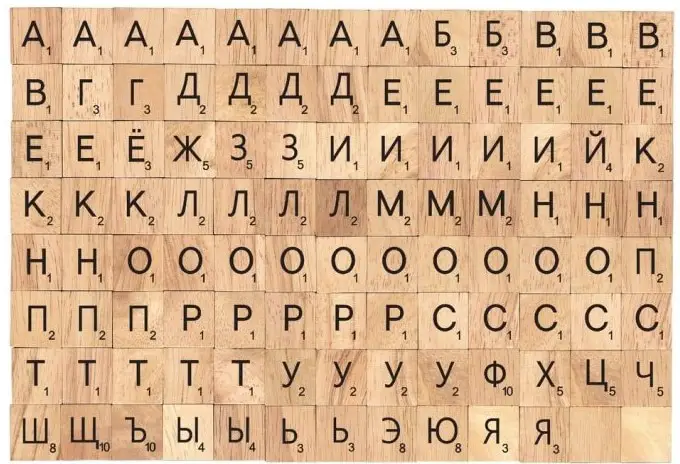
Resources for Students of Russian

